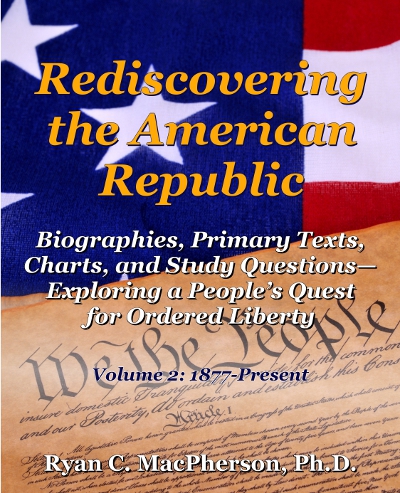Did you know that America’s Pledge of Allegiance owes its origin to a socialist?
The Authorship of the Pledge of Allegiance
Francis Bellamy, the author of the pledge, was a cousin of Edward Bellamy, who wrote a socialist utopian novel Looking Backward. A bestseller that inspired a cadre of socialists to form “Bellamy clubs,” this book envisioned the day when capitalism would vanish and America would be a harmonious socialist nation consisting of nothing but a content middle class. Patriotism and brotherhood would replace individualism and greed.
Like Edward, Francis also sought to unite Americans with a common sense of brotherhood. Francis especially celebrated the three ideals of the French Revolution: liberty, fraternity, and equality. As a Baptist minister in Boston, he had seen firsthand the plight of the poor. Francis Bellamy regarded covetousness as the greatest sin of the Gilded Age, a covetousness that deprived one’s neighbor of what was necessary for his life. Bellamy’s associations with socialist organizations put a rift between him and the Boston businessmen who hitherto had supported his church. In 1891, Bellamy resigned from the ministry to accept a position with The Youth’s Companion, a magazine that soon took a central role in promoting the 400th anniversary of Columbus’s arrival in America.
For Bellamy, Columbus Day was an opportunity to unite Americans into a universal brotherhood regardless of their diverse immigrant ethnicities. Cooperating with the National Education Association, and winning over the support of President Harrison and former President Cleveland, Bellamy orchestrated the National Public School Celebration in conjunction with the commemoration of Columbus. The American flag and public schools were the one thing all Americans had in common, argued Bellamy. Therefore, they should play a central role in honoring Columbus. President Harrison proclaimed October 21, 1892, as Columbus Day, calling upon schools to celebrate American heritage by raising up the national flag for salute.
Bellamy wrote a pledge for children to recite while saluting the flag. Initially, he intended to include the words “fraternity” and “equality,” but had to leave those terms out because the socialist implications were unpopular with many Americans. He did, however, further his own nationalist agenda by employing the word “allegiance” in his title. Oaths of allegiance had been required during the Civil War and Reconstruction, as the Union sought to eliminate rebels from public office. In a similar spirit, Bellamy wanted schoolchildren to commit themselves to the common good by pledging their allegiance to the nation which they shared. Despite his own socialist leanings, the pledge of allegiance came to signify American patriotism against the national socialism of Germany during World War II, when Congress first adopted the Pledge of Allegiance, and also against Soviet communism during the Cold War, when Congress amended the pledge to commemorate also America’s religious heritage.
Originally Published, 1892
I pledge allegiance to my flag and to the Republic for which it stands; one Nation, indivisible, with liberty and justice for all.
Revised, 1924
I pledge allegiance to the flag of the United States of America, and to the Republic for which it stands; one Nation, indivisible, with liberty and justice for all.
Adopted by Congress, 1942
That the pledge of allegiance to the flag, “I pledge allegiance to the flag of the United States of America and to the Republic for which it stands, one Nation indivisible, with liberty and justice for all,” be rendered by standing with the right hand over the heart; extending the right hand, palm upward, toward the flag at the words “to the flag” and holding this position until the end, when the hand drops to the side. However, civilians will always show full respect to the flag when the pledge is given by merely standing at attention, men removing the headdress. Persons in uniform shall render the military salute.
Amended by Congress, 1954
I pledge allegiance to the flag of the United States of America, and to the Republic for which it stands; one Nation, under God, indivisible, with liberty and justice for all.
Study Questions
- Why do you suppose the National Flag Conference revised the pledge in the 1920s? How, specifically, did the revision differ from Bellamy’s formulation in 1892?
- What changes did Congress make to the pledge, and why are those changes significant? How, too, did the historical context of the 1940s and the 1950s reshape the meaning of the pledge into something different than Bellamy may have intended?
- In Elk Grove Unified School District v. Newdow (2003), the U.S. Supreme Court ruled to retain the phrasing “under God” in the Pledge of Allegiance against the objections of an atheist father who did not want his child to recite those words in school. How would you have decided the case, and why? Does your opinion change in view of the facts that the child’s mother was a Christian who had no objection to the pledge, and that she, rather than the father, had legal custody of the child?
Source:
Ryan C. MacPherson, Rediscovering the American Republic, vol 2: 1877–Present (Into Your Hands LLC, 2013), 156–57.


